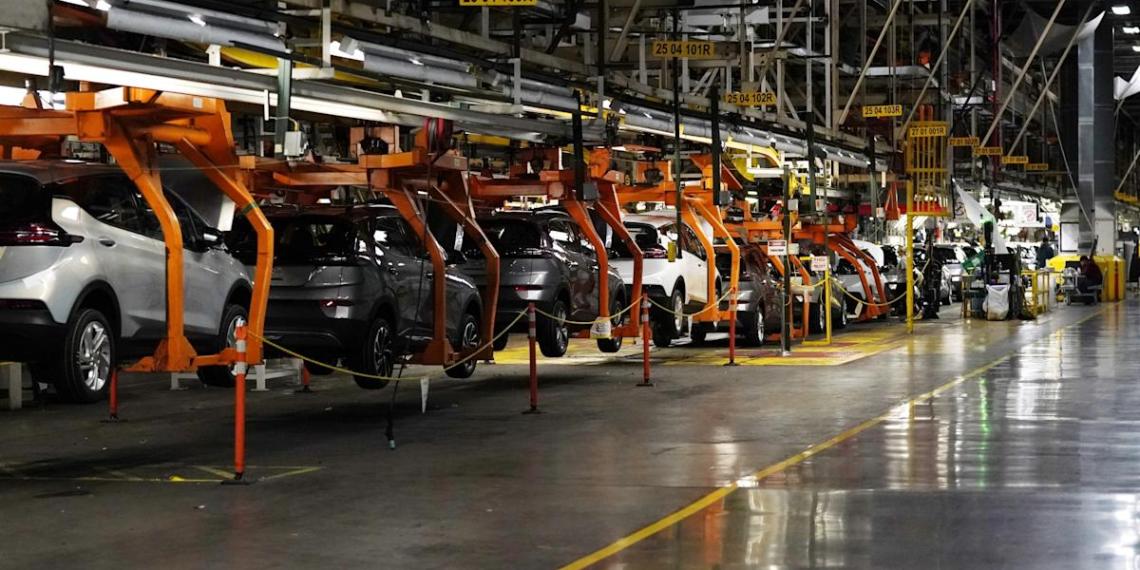A push from the Trump administration to roll back emissions standards and eliminate federal electric vehicle incentives is prompting a multibillion-dollar strategic shift by Detroit automakers back toward gasoline-powered cars.
General Motors recently announced plans to scale back EV production at two factories while overhauling a third to manufacture gas-fueled pickups instead of battery-powered ones. Similarly, Ford is redirecting funds from a canceled three-row electric SUV toward future internal combustion engine and hybrid vehicles. Meanwhile, Jeep-owner Stellantis is reviving its Hemi V-8 engine.
This pivot is freeing up billions of dollars previously allocated for EV development and compliance with pollution rules. From 2022, GM spent $3.5 billion on regulatory credits to meet fuel economy and emissions requirements. Ford has reduced its own credit-purchase commitments by nearly $1.5 billion this year alone, reallocating the money to gas and hybrid models. Ford CEO Jim Farley recently told analysts the policy shift “has the potential to unlock a multibillion-dollar opportunity over the next two years.”
The administration’s $3.4 trillion fiscal package ends the $7,500 tax credit for EV buyers on September 30 and eliminates fines for automakers failing to meet fuel-economy mandates. Stellantis, for example, paid $190 million in such penalties in each of the last two years. “Eliminating the fines will save us money in 2026 and beyond for sure,” GM Chief Financial Officer Paul Jacobson told investors.
In separate moves, the Environmental Protection Agency has proposed rescinding stringent limits on tailpipe emissions, and the president signed legislation nullifying similar regulations set by California.
These rollbacks have drawn sharp criticism from environmental advocates, who note that automobiles are a leading source of planet-warming emissions. Under the previous administration, the EPA projected its rules would cut carbon dioxide emissions by approximately 7 billion metric tons and save drivers an average of $6,000 in fuel and maintenance costs. Dan Becker of the Center for Biological Diversity’s Safe Climate Transport Campaign called the move a revocation of “the biggest single step any nation has taken to save oil, save consumers money at the pump and combat global warming.”
However, automakers had argued that the standards were overly stringent, forcing them to produce more electric models than the market demanded. Farley said the biggest beneficiary will be the company’s Ford Blue division, which builds internal combustion and hybrid vehicles and “has carried a lot of the compliance burden.” In a sign of this strategic change, Ford is retooling its plant in Oakville, Ontario, to produce Super Duty F-Series pickups after scrapping plans for EV production there due to sluggish demand.
The near-term savings from eased environmental rules help offset some costs from the administration’s aggressive tariff policies on imported vehicles and parts. Ford’s $1.5 billion savings on credits this year nearly counteracts the projected $2 billion profit hit from tariffs in 2025. GM anticipates about $3 billion in annual costs from tariffs, significantly more than the roughly $730 million it has spent annually on compliance since 2022.
While legacy automakers benefit, EV-focused companies like Tesla and Rivian stand to lose a major source of revenue. Tesla has earned over $10 billion since 2020 by selling regulatory credits to other automakers. JPMorgan analysts estimate that roughly 40% of Tesla’s profits could be at risk if the policy changes are fully implemented. Rivian CFO Claire McDonough said in August that the company expects zero revenue from credit sales for the rest of the year, after collecting $160 million in the first half.
Source link





